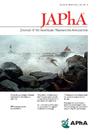如何优化无菌药品服务:来自药师经验的定性见解。
IF 2.5
4区 医学
Q3 PHARMACOLOGY & PHARMACY
Journal of the American Pharmacists Association
Pub Date : 2025-05-01
DOI:10.1016/j.japh.2025.102342
引用次数: 0
摘要
背景:药学无菌服务对于许多关键的医院服务是必不可少的,因为它们提供无菌和受控的环境,高素质的工作人员可以在其中制备注射药物。虽然对无菌药品服务问题的定量研究以前有记录,但缺乏数据来解释这些问题的原因。目的:本研究旨在探讨药师在无菌药品服务中遇到的实际挑战。方法:采用半结构化访谈法进行定性研究。参与者是在印度尼西亚日惹省各种住院临床环境中工作的药剂师。参与者通过最大变异和滚雪球抽样有目的地招募。访谈指南是在全面查阅文献并与一些专家讨论无菌药品服务相关概念后制定的。数据收集于2023年4月至8月,使用NVivo软件通过反身性主题分析进行分析。结果:对日惹省5个地区12家医院(7家公立医院和5家私立医院)的19名药剂师进行了访谈。无菌服务的挑战可以分为五个主题:(1)物理设施和设备不可靠是需要解决的问题;(2)人力资源的质量和数量不足阻碍了最佳的无菌药品服务;(3)需要有能力、负责任和负责任的无菌调剂服务管理,以解决卫生人员之间的工作委托、监督、协调和沟通问题;(4)需要考虑生产系统的各种问题。(5)董事会在制定无菌服务政策时缺乏药师的参与。结论:通过解决无菌药品服务面临的五大挑战,机构领导可以开始改善患者安全和医院绩效。将经验丰富的药剂师纳入行政层面的决策过程是解决这些挑战的一种策略。本文章由计算机程序翻译,如有差异,请以英文原文为准。
How to optimize aseptic medicine services: Qualitative insights from pharmacists' experience
Background
Pharmacy aseptic services are essential for many critical hospital services as they provide sterile and controlled environments under which highly qualified staff prepares injectable medicines. Although quantitative studies on problems of aseptic medicine services have been previously documented, there is a paucity of data to explain the cause of those problems.
Objective
This study aimed to examine practical challenges experienced by pharmacists during aseptic medicine services.
Methods
This was a qualitative study conducted using semistructured interviews. The participants were pharmacists working in various inpatient clinical environments in Yogyakarta Province, Indonesia. Participants were purposefully recruited through maximum variation and snowball sampling. The interview guide was developed after comprehensive literature review and discussions with some experts related to concepts in aseptic medicine service. Data were collected from April to August 2023 and analyzed via reflexive thematic analysis using the NVivo software.
Results
A total of 19 pharmacists working in 12 hospitals (7 public and 5 private) across the 5 regions in Yogyakarta Province were interviewed. The challenges in aseptic services can be grouped into 5 themes (1) unreliable physical facilities and equipment are the problems that should be solved, (2) shortage of the quality and quantity of human resources hinder the optimum aseptic medicine services, (3) competence, responsible, and accountable aseptic dispensing services management are needed to counter issues related work delegation, supervision, coordination, and communication between health staff, (4) various problems of production systems are needed to be considered, and (5) there is lack of pharmacist involvement in board of directors in making policy regarding aseptic services.
Conclusion
By addressing the 5 main themes of challenges to aseptic medicine services, institutional leadership can begin to improve the patient safety and hospital performance. Incorporating experienced pharmacists into the decision-making processes at the executive level is a strategy to address these challenges.
求助全文
通过发布文献求助,成功后即可免费获取论文全文。
去求助
来源期刊
CiteScore
3.30
自引率
14.30%
发文量
336
审稿时长
46 days
期刊介绍:
The Journal of the American Pharmacists Association is the official peer-reviewed journal of the American Pharmacists Association (APhA), providing information on pharmaceutical care, drug therapy, diseases and other health issues, trends in pharmacy practice and therapeutics, informed opinion, and original research. JAPhA publishes original research, reviews, experiences, and opinion articles that link science to contemporary pharmacy practice to improve patient care.

 求助内容:
求助内容: 应助结果提醒方式:
应助结果提醒方式:


